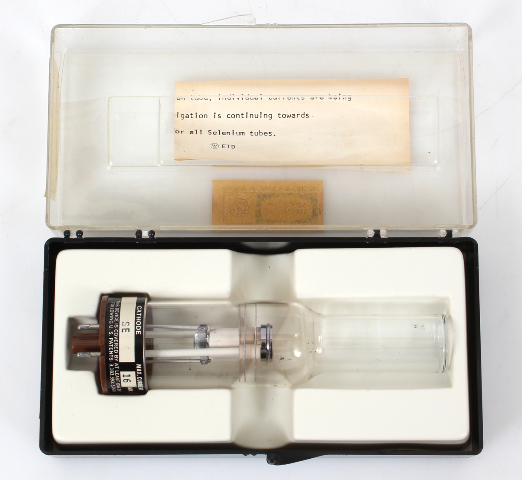
Various benefits of Hollow Cathode Lamps makes it ideal for usage in AAS. Heraeus’ lamps are also compatible with all major Atomic Absorption Spectrophotometry including: HOLLOW CATHODE LAMP FILLED WITH NEON TITANIUM Product Code: LM604-32. HOLLOW CATHODE LAMP FILLED WITH NEON ANTIMONY Product Code: LM600-12. Can be used for almost any AA instrument A range of Hollow Cathode Lamps suitable for laboratory applications.Clear signals and low distortion due to special cathode technology.Variety of single- and multi-element coded / non-coded in low and high-current, 37 mm and 50 mm lamps.Apart from HCLs, Hollow Cathode Effect gets used in neon signages as well. Low Noise & hence better spectral responseĪs we are into supply of Hollow Cathode Lamps manufactured by Heraeus, some of the benefits of choosing Heraeus made HCLs are, Working of Hollow Cathode Lamp How HCL are used Hollow Cathode Lamps are ideal source of spectral lines that are used for testing in laboratories.citation needed Inside the sealed lamp, filled with argon or neon gas at low pressure, is a cylindrical metal cathode containing the element of interest and an anode. Hollow cathode lamps (HCL) are the most common radiation source in LS AAS. Hollow cathode lamp to produce light of the desired wavelength. Hollow cathode lamp (HCL) Hollow cathode lamps. Better Lifetime compared to other lamps Fuel and oxidant to burn the sample by heat.

The excited atoms of the inert gas and cathode are used for detection and to measure the spectrum while testing. Due to creation of plasma from the inert gas, sputtering of atoms from the cathode takes place as inert gas ions get bombarded on the cathode. When Voltage gets passed through the anode, the inert gas gets ionized. titanium cylindrical hollow cathode (15 mm length and 3 mm diameter) and a. Typical Hollow Cathode Lamp SetupĪn HCL is formed of a Glass Tube that contains an anode, a cathode and inert gas. the negative light of a dc hollow cathode discharge in Neon at 3.5 Torr working at. Basically Hollow Cathode Effect is electrical conduction at lower voltage. Hollow Cathode Effect was first observed in 1916 by Friedrich Paschen, a German physicist, known for his work on electrical discharges. Hollow Cathode Lamps working totally depends on the hollow cathode effect. An adequate gas, usually argon or helium, is introduced in the lamp at a pressure of 1 to 20 Torr and flows.

Hollow Cathode Lamps are ideal source of spectral lines that are used for testing in laboratories. The anode is closed with a vacuum tight window. N., Atlas of the Spectrum of a Platinum/Neon Hollow-Cathode Reference Lamp in the Region 1130-4330. The idea of this blog post is to cover working aspect of Hollow Cathode Lamps followed by its various advantages that fulfills Hollow Cathode Lamps’ usage in AAS. Humphreys, (1934) Interference Measurements in the Spectra of Noble Gases, J.


 0 kommentar(er)
0 kommentar(er)
